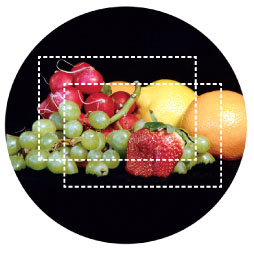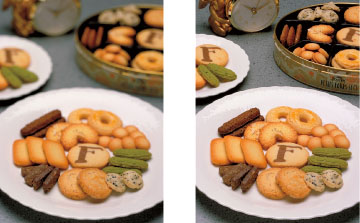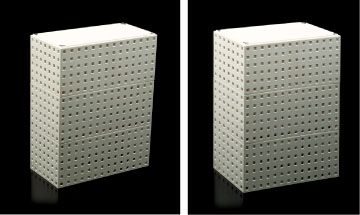Camera Movement
For Full Camera Movement photography,
large sized image circles are needed.
The image circle of a lens for DSLR camera is designed to cover the camera sensor narrowly. For use of Full Camera Movement, a comparatively large sized image circle is required. With Rodenstock, or similar lenses from other manufacturers, you can make Full Camera Movement photography effectively as they have large enough image circles to accommodate the camera Full Camera Movement.

Image circle and technical camera movement
As light passes through the lens, it forms an image circle at the imaging plane (where the film or sensor is placed).
The illumination is greatest at the image circle center and diminishes towards to edge of the field, eventually passing no light.
The "usable" portion of this illumination for purposes of imaging is generally referred to as the "image circle".
The size of the image circle varies according to the lens design and focusing distance. It is critical to match the size of this image circle to the imaging needs of the subject. It governs, among other things, the amount of camera movement that can be achieved at a given format size, focusing distance, and field-of-view. If the circle is not sufficiently large to accommodate all of these conditions, the result will be vignetting, or insufficient illumination on part of the subject or field.
The illumination is greatest at the image circle center and diminishes towards to edge of the field, eventually passing no light.
The "usable" portion of this illumination for purposes of imaging is generally referred to as the "image circle".
The size of the image circle varies according to the lens design and focusing distance. It is critical to match the size of this image circle to the imaging needs of the subject. It governs, among other things, the amount of camera movement that can be achieved at a given format size, focusing distance, and field-of-view. If the circle is not sufficiently large to accommodate all of these conditions, the result will be vignetting, or insufficient illumination on part of the subject or field.
Control of framing
To adjust framing, while shifting the direction of camera or position of tripod or changing of lens should be done in an ordinal shooting, camera with Full Camera Movement can control framing at the same position only by moving lens or back around in the image circle of lens.

Control of focus
With Full Camera Movement, you can focus wholly even on deep subject that continues away from the camera by controlling the focal plane with adjustments of the optical axis. Intentional “Bokeh” is also created: Good for motion picture filming.

With the counter Tilt just a certain part of a subject can be focused on, very effective for product image.

Control of perspective
When shooting with an ordinary camera, an object located at a farther distance appears smaller while the same object placed closer to the camera would appear larger. It also causes a bending of perpendicular line of buildings and box-shaped objects, leading deformation of image of the objects. This optical distortion is commonly referred to as the “Ships Prow Effect”. To correct the deformation, use Full Camera Movement to control framing.

Intentional deformation can be also created in order to accentuate the shape.







